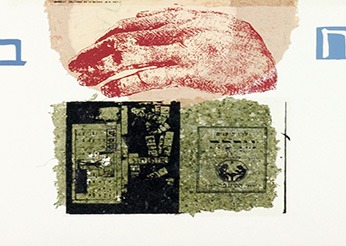"They enjoyed the scent of his clothesblessed by his forefathers"
The encounter of Rabbi Jacob Saphir with the Holy 'Sayeed' in Yemen
DOI:
https://doi.org/10.17851/1982-3053.13.25.189-198Palavras-chave:
Jacob Saphir, Corpo, Odores, MoralResumo
Embora o odor corporal seja uma característica completamente natural, os cheiros que emanam do corpo ou das roupas foram percebidos ao longo da história como uma manifestação do mundo espiritual e da identidade moral. O presente artigo discute o encontro do rabino Jacob Saphir (1822-1886), um famoso viajante judeu, com um honrado muçulmano. Durante o evento, os seguidores do homem santo não o tocam, mas sentem o perfume especial de suas roupas. O evento incomum ilustra o significado social do odor emitido pelo corpo ou pelas roupas de figuras distintas entre os muçulmanos. Também demonstra uma nova visão de Saphir sobre o significado dos odores corporais nas escrituras judaicas.
Downloads
Referências
ASHBROOK HARVEY, Susan. Olfactory Knowing: Signs of Smell in the Lives of Simeon Stylites. In: Reinink, Gerrit J. and Klugkist, Alexander C. (Ed.). After Bardaisan: Studies on Continuity and Change in Syriac Christianity in Honor of Han J. W. Drijvers. Leuven: Peeters Press, 1999.
ASHBROOK HARVEY, Susan. Scenting Salvation: Ancient Christianity and the Olfactory Imagination. Berkeley: University of California Press, 2006.
BABYLONIAN TALMUD. Vilna: Re'em, 1882.
CLASSEN, Constance. The Odor of the Other: Olfactory Symbolism and Cultural Categories. Ethos, 20[2] (1992), p. 133-166.
EISENSTEIN, David. Encyclopaedia Otzar Israel. New York: Pardes, 1952.
EVANS, Suzanne. The Scent of a Martyr. Numen, n. 49, p. 193-211, 2002.
GENESIS RABBAH. Theodor, Julius, and Albeck, Ḥanoch edition. Berlin: Itzkowski, 1903.
HORKHEIMER, Max and ADORNO, Theodor W. Dialectic of Enlightenment: philosophical fragments. Stanford, California: Stanford University Press, 2002.
IDELMAN SMITH, Jane; HADDAD, Yvonne Yazbeck. The Islamic Understanding of Death and Resurrection. Albany: State University of New York Press, 1981.
JÜTTE, Robert. A History of the Senses: From Antiquity to Cyberspace (translation by James Lynn). Cambridge and Malden: Polity Press, 2005.
LARGEY, Gale P. and WATSON, David R. The Sociology of Odors. American Journal of Sociology, n. 77, p. 1021-1034, 1972.
MIDRASH TANḤUMA. Buber, Solomon edition. Vilna: Re'em, 1885.
PESIKTA ZUTRATA (Lekach Tov). Buber, Solomon edition. Vilna: Reem, 1880.
RITCHIE, Ian D. The Nose Knows: Bodily Knowing in Isaiah 11:3. JSOT, 87 (2000), p. 59-73.
RIVLIN, Joseph Joel. Rabbi Jacob Saphir. Moznayim, n. 11, p. 74-81, 1940.
ROTHENBERG, Mordechai. Of Life and Immortality: Images of Paradise as Modifiers of Behavior: Christianity, Islam, Judaism. Jerusalem: Beit Reuben Mass, 2008. [Heb.]
SAPHIR HALEVY, Jacob. Even Sapir. Lyck and Mayence: Meikitze Nirdamim, 1866-1874.
SHARON, Moshe. The Bahá'í Faith and its Holy Writ, the Most Holy book (al-Kitdb al-Aqdas) in Hebrew Translation. Jerusalem: Carmel, 2008. [Heb.]
SHEMESH, Abraham. O. "The Fragrant of Paradise": Smells, Perfumes and Incense in Jewish Tradition: Customs, Beliefs and Symbols. Ramat Gan: Bar Ilan University Press, 2017 (Heb.)
SINGER Isidore and OCHSER, Schulim. "Saphir, Jacob (known also as Eben Sappir)". In: Singer, Isidore et al. (eds.). Jewish Encyclopaedia. New York: Funk & Wagnalls, 1906.
SONG OF SONGS RABBA. Vilna: Reem, 1885–1887.
Downloads
Publicado
Edição
Seção
Licença
Copyright (c) 2020 Arquivo Maaravi: Revista Digital de Estudos Judaicos da UFMG

Este trabalho está licenciado sob uma licença Creative Commons Attribution 4.0 International License.
O autor cede os direitos autorais à revista Arquivo Maaravi. Os direitos de licenciamento utilizados pelo periódico estão sob a Licença Creative Commons do tipo atribuição BY: são permitidos o compartilhamento (cópia e distribuição do material em qualquer meio ou formato) e adaptação (remix, transformação e criação de material a partir do conteúdo assim licenciado para quaisquer fins, inclusive comerciais.











